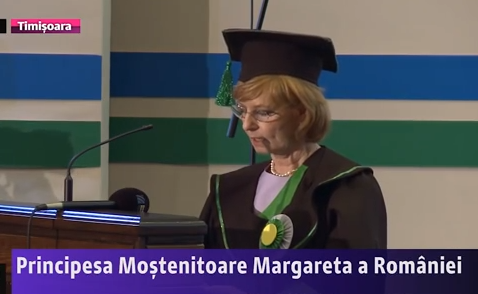現在セルビア王室を称する(旧)ユーゴスラビア王室の、
ユーゴスラヴィア皇太子アレクサンダル2世殿下(His Royal Highness Crown Prince Alexander II of Yugoslavia / Serbia)、
ユーゴスラヴィア皇太子妃カタリナ殿下(英語ではキャサリン皇太子妃 : Her Royal Highness Crown Princess Katherine of Yugoslavia / Serbia)、
へのインタビュー記事が、王室公式サイトに掲載されています。
もとの記事はセルビアの地方紙かなにかでしょうか。よくわかりません。
記事:
(英語:セルビア王室公式サイト)Crown Prince Alexander and Crown Princess Katherine Interview for Kurir newspaper – We are ready for the return of the monarchy | The Royal Family of Serbia
内容ですが、まずは、アレクサンダル殿下と先妻の間の次男、フィリップ王子殿下(His Royal Highness Prince Philip : フィリプ・カラジョルジェヴィッチ : Filip Karađorđević)と、ダニカ・マリンコヴィッチ嬢(Danica Marinković)の結婚。
今年(2017年)10月にベオグラードの聖天使首ミハイル大聖堂にて挙式。
例によって、キリスト教/東方正教会/セルビア正教会(当然のことながら発言などではセルビア王室構成員を称号・敬称つきで言及しています)のセルビア総主教イリネイ聖下(ペーチ大主教 : ベオグラード・カルロヴツィ府主教 : His Holiness Irinej, Serbian Patriarch, Archbishop of Peć, Metropolitan of Belgrade and Karlovci)が司式。
なお、ダニカ妃殿下の懐妊も伝えられています。
関連して、カタリナ皇太子妃殿下の前夫との二人の子供、デイヴィッド・アンドルーズ(David Andrews)・アリソン・アンドルーズ(Alison Andrews)もそれぞれ子供がおり、今回の結婚に至るまで、アリソンが気をまわしたらしいようなコメントがあります(なお、アリソン・アンドルーズは、王室関連行事への出席がそれなりに多いです)。
さらに家族が増えることを喜んでいるようです。
また記事中にはありませんが、セルビア王室近親以外の王室関連出席者として
- スウェーデン皇太子ヴィクトリア殿下
- 前スペイン王妃ソフィア陛下
- カラブリア公爵未亡人アナ殿下(オルレアン家出身で(旧)両シチリア王室カラブリア系に嫁ぎ、夫はスペイン王子の称号を保有していた)
らが参列した模様。
また、アレクサンダル皇太子殿下は、セルビアのEU加盟を重視しているようなのと、西欧へのあこがれのようなもので若者がセルビアを捨てていっている現状への強い警戒も示しています。
白宮殿【White Palace】にかかわること、ペータル2世、アレクサンダル1世、マリア王妃、トミスラヴ王子、アンドレイ王子などへも言及があります。
そして、セルビア共和国のほか、ボスニア・ヘルツェゴビナのスルプスカ共和国【セルビア人共和国】への言及。セルビアは現体制・現政権、セルビア正教会、旧ユーゴスラビア王室、とあらゆる分野を通じてスルプスカ共和国への影響を強めていますが、今回は特にさほどその話は出ていません。
やはり出てきたのは、君主政復活と、「~のような国々はうまくいっているじゃないか」という話。
The most successful states are constitutional monarchies, the Scandinavian countries are an excellent example of this, and not forget Japan.
適当訳:「もっとも成功している国々は立憲君主制国家、北欧の各国はそのすばらしい成功例だ、日本も忘れてはいけない」
ということなのですが、日本とセルビアでは……状況が違いすぎて……。
そのほか、英国のエリザベス2世陛下と夫のエディンバラ公爵フィリップ王子殿下の結婚70周年式典に出席予定の話(なお、無事出席があり、もう式典は終わりました)。
ここでジョージ6世の名前も言及されています。
そのほか、ミハイロ王子殿下(1985年生まれの方)とリュビツァ・リュビサヴリェヴィッチ妃殿下の名前や、ペータル3世王世子殿下の名前も少し出ています。
